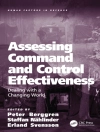This book discusses all three formalisms used in the study of finite temperature field theory, namely the imaginary time formalism, the closed time formalism and thermofield dynamics. In addition, the finite temperature description on an arbitrary path in the complex t-plane is also described in detail. Gauge field theories and symmetry restoration at finite temperature are among the practical examples discussed in depth. The thermal operator representation relating the zero temperature Feynman graphs to the finite temperature ones are also explained in depth. Applications of the formalisms are worked out in detail. The consistent generalization of light-front field theories to finite temperature is systematically explained as well as the phenomenon of Unruh radiation. Cutting (Cutcosky) rules for the imaginary parts of amplitudes at finite temperature are discussed in careful detail and examples are worked out. Spontaneous and dynamical symmetry breaking and possible symmetry restoration at finite temperature are described. The question of gauge dependence of the effective potential as well as physical parameters (like mass) and the Nielsen identities are explained with examples. The methods for calculating effective actions at finite temperature are described with examples. The subtleties which arise at finite temperature are pointed out in detail also with examples. The nonrestoration of some of the symmetries at high temperature (such as supersymmetry) and theories on nonsimply connected space-times are described thoroughly. Examples of nonequilibrium phenomena are discussed with the disoriented chiral condensates as an illustration. Fluctuation-dissipation theorem is explained in detail and is worked out systematically for glassy materials. Several appendices are added at the end of some of the chapters to help the readers appreciate the discussions of the individual chapters.
This book is a very useful tool for graduate students, teachers and researchers in theoretical physics.
Contents:
- Imaginary Time Formalism
- Real Time Formalism
- Thermofield Dynamics
- A General Contour in the Complex t-plane
- Gauge Theories
- Thermal Operator Representation
- Light-front Field Theories at Finite Temperature
- Cutting Rules at Finite Temperature
- Spontaneous Symmetry Breaking
- Nielsen Identities
- Subtleties at T ≠ 0
- Supersymmetry at T ≠ 0
- Effective Actions
- Non-Equilibrium Phenomena
- Fluctuation-Dissipation Theorem
Readership: Graduate students, teachers and researchers in theoretical physics.
’This second edition of the book, 'Finite Temperature Field Theory, ’ by Professor Das provides an excellent and very comprehensive introduction to thermal field theory. He explains the theory in a very clear and pedagogical way, by using the imaginary time approach, the real time formulation as well as thermofield dynamics … This second edition discusses many important topics which are not covered in other books … I highly recommend this book, written with great care and thoroughness, which will be very useful, both as a text as well as for self-study.’ – Josif Frenkel University of São Paulo, Brazil
’The subject of relativistic quantum fields in thermal equilibrium developed episodically in journal articles for fifty years. The new edition of this classic book brings together the fundamentals of that development as well as new material in a very clear style that will be useful as an introduction for beginners and as a reference for experts. The new edition is 50% longer than the original due to rewriting of some chapters and the addition four new chapters. One new chapter explains why thermal Green’s functions defined on any path in the complex time plane passing from t0 to t0 — iß will have path independent N-point correlation functions for the physical fields but not for the auxiliary fields. Another new chapter treats field theory in generalized light-front coordinates and shows that the Unruh temperature for a uniformly accelerated observer coincides with the Tolman-Ehrenfest temperature. Difficult issues are always pointed out and carefully explained.’ – Professor H Arthur Weldon West Virginia University
Review of the First Edition: 'This is an excellent book that will be useful both as an introduction for students and as a comprehensive reference for experts. The emphasis throughout is on fundamentals. Professor Das carefully develops finite temperature field theory using imaginary time, real time, and thermofield dynamics. He explains essential techniques from zero-temperature field theory (e.g. BRS invariance, cutting rules for Feynman diagrams, effective potentials and Nielsen identities) so well that the extension to finite temperature is almost effortless. Anyone interested in the subject should own this book.’ – H Arthur Weldon West Virginia Univ.












